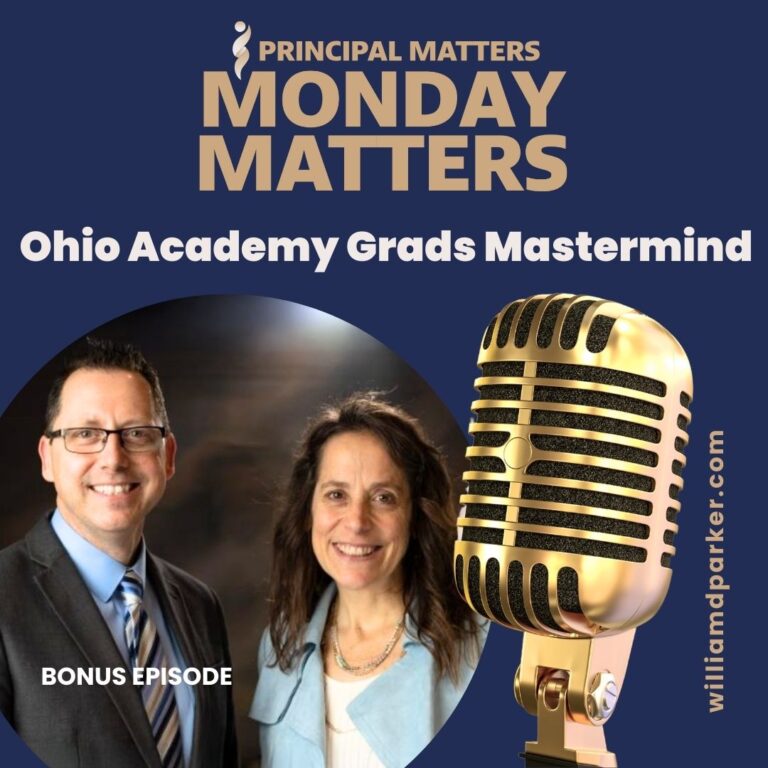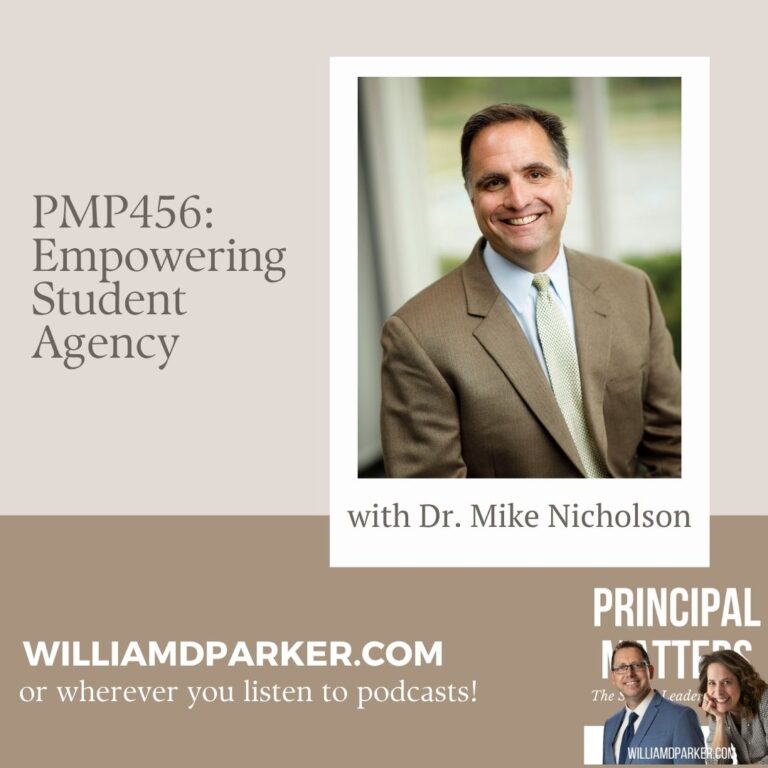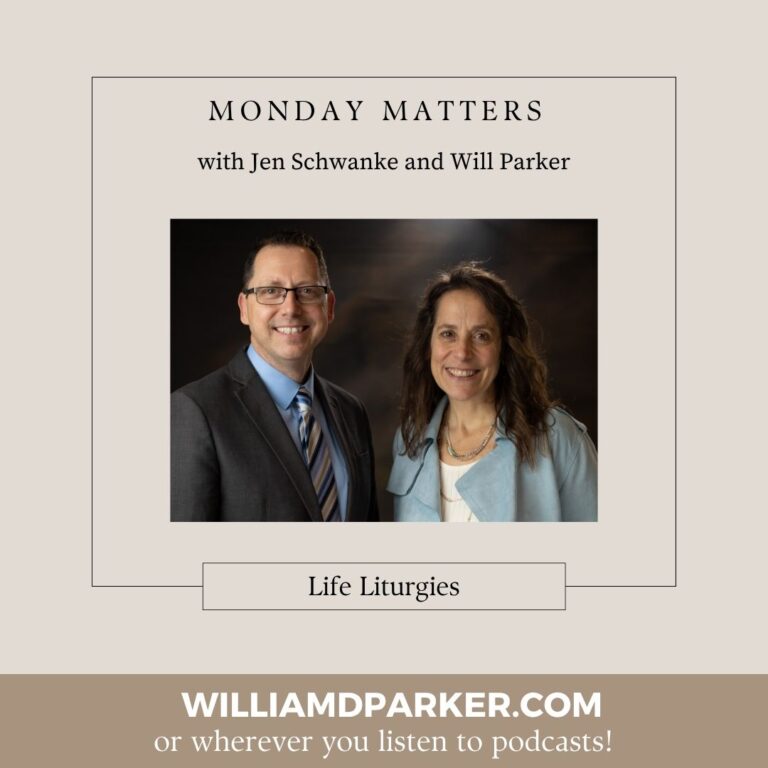Podcast: Play in new window | Download
Great teams understand the importance of depending on one another.

With the many roles of a school leader, one of the biggest challenges is moving from independence to interdependence. In other words, how do you shift from a school culture with teachers isolated from one another to a place of shared ideas and teamwork – a culture of strong collaboration?
How do you practice teamwork that works and improves student outcomes? In a recent webinar presentation, Ms. Diana Lebsack, Principal of Yukon Middle School and Oklahoma’s 2018 Middle School Principal of the Year, shares her experiences in leading stronger collaboration.
Meet Diana Lebsack

For the past four years, she has served grades 6-8 with a school population of 2,000 students and 130 teachers. Prior to Yukon, she spent ten years in school leadership as a high school and middle school principal in Putnam City, Oklahoma. In 2018, Diana was named Oklahoma’s Middle School Principal of the Year. Her school has a strong commitment to shared decisions and professional learning communities.
In this conversation, Diana shares three main takeaways:
1. Define Expectations for Collaboration
Defining expectations starts by setting the stage early. One way is by modeling collaboration through hiring with teams. When interviewing, frame your hiring questions with PLC samples, beliefs, and models of collaborative learning. Ask questions like: What experience do you have in PLC’s and what have you learned in the past?
This allows you to identify where candidates have strengths or need growth before they join the team. Ask yourself if they have the capacity to work collaboratively? If so, they will be a good fit for a school committed to collaboration. Explain your beliefs and discover how a candidate’s values match those of your school.
2. Set Clear Frameworks for Collaboration
Do teachers know the cycles, evidences, and resources for collaboration. Consider these questions from Solution Tree’s All Things PLC flowchart:
• What do you want students to know?
• How will we know when they learn it?
• How will we respond when they have not learned it?
• How will we respond when they already know it?
Every PLC meeting should be focused on one of these tenets based on where you are in the cycle of learning.
Also, you can share docs via Google Drive. Set schedules and dates when evidence is due from each of your collaboration teams. Use your faculty handbook to include an index of resources including Every SMART Goal form, and include a form shortcut sheet, and a weekly email to touch base on PLC focuses. In other word, provide the resources teachers need to succeed as teams.
3. Define Healthy Collaboration with Checkups
How are you modeling collaboration for your teachers? Are you openly talking about PLC’s throughout the year?
Share these four quadrants with your teachers and ask them to self-reflect their teams by identifying where they fall in these areas:
• Quadrant 1: High Productivity/High Relationships
• Quadrant 2: High Productivity/Low Relationships
• Quadrant 3: Low Productivity/High Relationships
• Quadrant 4: Low Productivity/Low Relationships
Once teachers have reflected and identified current practices, you can have honest conversations about how to move forward toward Quadrant 1 as the ideal.
Let’s Wrap This Up
As you begin a new semester, don’t let the process of learning overwhelm you. Moving from independence to interdependence is hard work, but it is worth it to see teachers grow as teams and students meeting shared learning standards.
Now It’s Your Turn
What is one step you can take toward strengthening collaboration for your school? How can you restructure your hiring process, revisit your framework, or provide checkups for your professional learning communities? Don’t let the hard work of learning derail you from taking one step at a time toward improved student outcomes. You can see the video and slides for this presentation here. If you’d like to connect with Diana Lebsack for more information, you can reach her by email at diana.lebsack@yukonps.com.
Sign-Up For Free Updates and Ebook
When you enter your email address below, you will automatically receive my newest posts and a free Ebook, 8 Hats: Essential Roles for School Leaders. Let’s keep learning together!
Subscribe for free weekly updates and receive free e-book!
(function($) {window.fnames = new Array(); window.ftypes = new Array();fnames[0]=’EMAIL’;ftypes[0]=’email’;fnames[1]=’FNAME’;ftypes[1]=’text’;fnames[2]=’LNAME’;ftypes[2]=’text’;}(jQuery));var $mcj = jQuery.noConflict(true);
Principal Matters–The Book!

School leaders are very busy, so each of the twenty-four chapters is designed as a quick-read and followed with take-action questions for follow-up or reflection. If you want practical ideas on understanding your purpose, managing school teams, dealing with challenges, and leading with courage, action, motivation, and teamwork, go HERE to pick up a copy for you or your team.
Messaging Matters

Harness the power of messaging to create a culture of acknowledgment, respect, and celebration. Written specially for leaders, this title is divided into three parts, helping readers to maximize their role as chief communicators with students, teachers, and parents and community. Each chapter includes suggestions for using digital tools to enhance messaging and ends with reflection questions and practical next steps.


